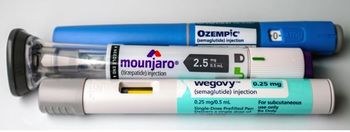
Drug Reduces Alzheimer's-Like Tau Tangles in Mice
JACKSONVILLE, Fla. -- A way to reduce the dangerous accumulation of tau protein tangles in the brain that is characteristic of Alzheimer's disease has been reported by researchers studying mice here.
JACKSONVILLE, Fla., Feb. 16 -- A way to reduce the dangerous accumulation of tau protein tangles in the brain that is characteristic of Alzheimer's disease has been reported by researchers studying mice here.
In these animals genetically engineered to have human tau proteins, a drug targeting the protein Hsp90 reduced levels of abnormal tau, while having little or no effect on normal tau, according to Leonard Petrucelli, Ph.D., of the Mayo Clinic here.
The drug, dubbed EC102, and others like it hold promise as possible treatments for Alzheimer's, Dr. Petrucelli and colleagues reported online today in advance of publication in the March issue of the Journal of Clinical Investigation.
"The administration of Hsp90 inhibitors may provide a useful clinical approach to the treatment of (Alzheimer's disease) and other tauopathies," they said.
The most common of the "tauopathies" is Alzheimer's disease, in which hyper-phosphorylated tau (or p-tau) in the brain in the brain aggregates in neurofibrillary tangles, in dystrophic neurites in senile plaques, and in cell processes in the neuropil.
The protein Hsp90 is a so-called chaperone protein, whose function is ensure that other proteins have the correct configuration and either to repair them or break them down if they are faulty, Dr. Petrucelli said in an interview.
Tau -- one of the clients of Hsp90 -- is normally unfolded, but folds into a tight hairpin when it becomes hyper-phosphorylated. At that stage, Dr. Petrucelli said, Hsp90 should break down the misfolded tau, but in the Alzheimer's brain it doesn't happen fast enough, possibly because Hsp90 is not responding properly.
EC102, Dr. Petrucelli said, is a low molecular-weight substance that penetrates the blood-brain barrier. While it's called an "inhibitor" of Hsp90, what it actually does is force the protein to "lock into" its protein degradation mode.
In the engineered mice, administering the drug intra-peritoneally significantly reduced (P<0.001) the abnormal tau varieties, compared with mice injected with an inert vehicle substance.
The reduction was about 50%, the researchers found, but in contrast normal tau varieties did not change significantly, nor did other proteins that are clients of Hsp90.
That last finding is important, Dr. Petrucelli said, because it shows that EC102 doesn't increase the degradation of all the proteins affected by Hsp90, but only those that are abnormal.
With such a drug, he said, "you worry that it's going to cause massive devastation" by causing the destruction of all the proteins affected by Hsp90.
"And that's not true -- it's not degrading every Hsp90 client," he said, "but only those that are presented in an abnormal state."
Another aspect of the current study, he said, is that examination of the brain tissue of Alzheimer's patients shows intense Hsp90 activity in areas where there is pathology.
Meanwhile, in other areas of the brain -- while levels of the protein are about the same -- there is much less activity, he said.
The implication is that Hsp90 "is actively trying to compensate for the abnormal protein accumulation" but failing, Dr. Petrucelli said. Locking the protein into its degradation mode might improve the performance, he added.
Newsletter
Enhance your clinical practice with the Patient Care newsletter, offering the latest evidence-based guidelines, diagnostic insights, and treatment strategies for primary care physicians.

































































































































































































































































































